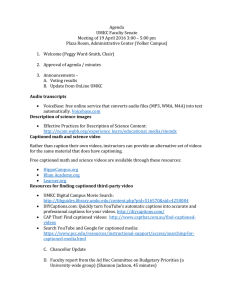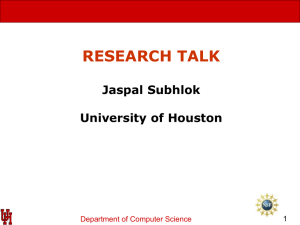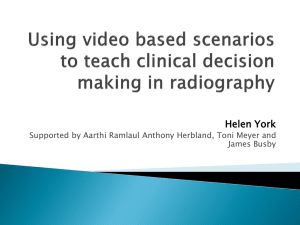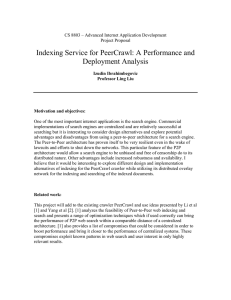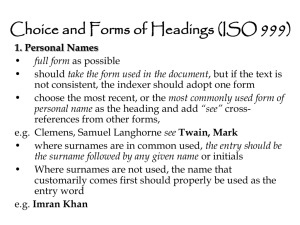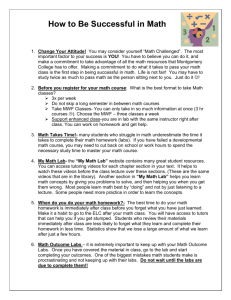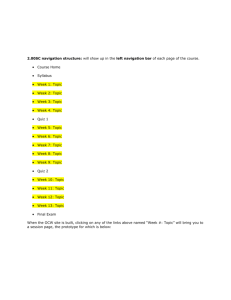ICS Videos - CBL - University of Houston
advertisement
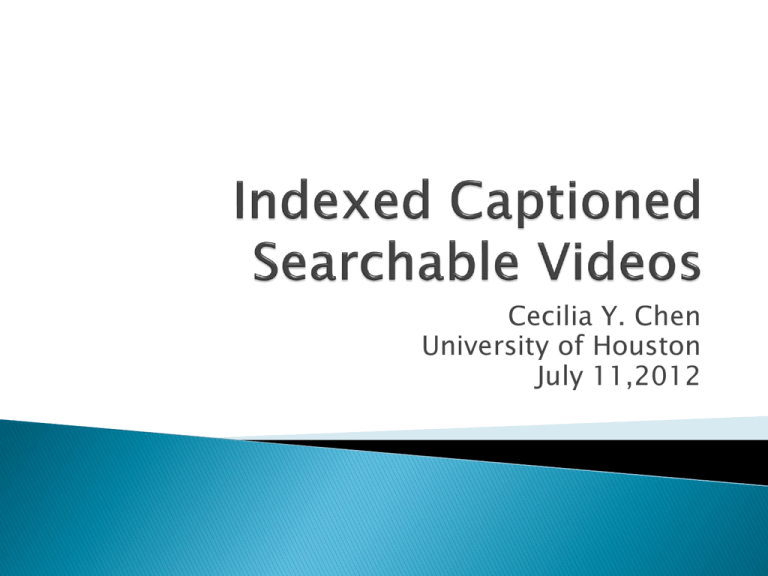
Cecilia Y. Chen University of Houston July 11,2012 Usage of video to deliver coursework online: commonplace Evidence for video usage: - MIT OpenCourseware , - Apple’s iTunes University - YouTube Edu Classroom lecture videos widely used at University of Houston Tablet PC recordings Video lectures : powerful and versatile resource Professor's lecture notes The lecture videos Students' notes Textbook reading sources 0% 20% 40% 60% The biggest weakness of the video format : Inability to quickly access the content of interest 80% Indexing: Segmented videos Search: Keyword search in video Captioning: Scrolling text for audio Integrated in ICS Video Player Project Goal: Quick access to video content Indexing : dividing video into segments; - User can start playback from any index frame Transition Point: is a frame that has changes significantly when compared to another frame. Image approach: comparing images by pixel to find transition points Text approach: comparing images using text to find transition points using OCR(Optical Character Recognition) Image Text Faster to compare two images Slower to compare two images Not effective for many cases like: the light changes, someone is writing in the power point and there is someone walking in the video. If you can extract the text is a good approach If there is only pictures it can still find transition points If the is only pictures then it wouldn’t find transition points There are special cases that is a lot faster to use the text approach When a video is processed with text comparison at the end the difference in time to process might not be that significant Most of the time the text comparison will recognize transition points accurately Houston, University of. Indexed Captioned Searchable Videos for STEM Courseware. 2009. <http://icsvideos.cs.uh.edu/>. Tuna T, Subhlok J, Barker L,Shah S, Varghese V, Johnson O. "Development and Evaluation of Indexed Captioned ." (n.d.). Tuna T, Subhlok J, Shah S. "Indexing and Keyword Search to Ease Navigation ." (n.d.). Questions
